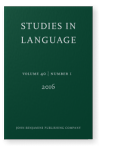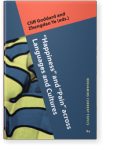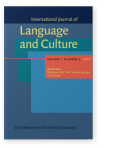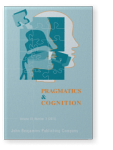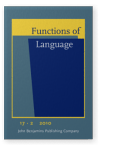Yuko Asano-Cavanagh
List of John Benjamins publications for which Yuko Asano-Cavanagh plays a role.
Articles
2020 Cultural adaptations: Translating politeness from Japanese to English Babel 66:3, pp. 457–483 | Article
Linguistic and pragmatic aspects of the translation of politeness in contemporary novels were examined under the theoretical framework of Descriptive Translation Studies (DTS) (Toury 1995) and Newmark’s functional theory (1988). The analysis revealed that linguistic expressions tied to… read more
2017 Chapter 9. Kawaii discourse: The semantics of a Japanese cultural keyword and its social elaboration Cultural Keywords in Discourse, Levisen, Carsten and Sophia Waters (eds.), pp. 211–234 | Chapter
With a point of departure in the Japanese keyword kawaii, roughly, “cute”, this chapter explores contemporary Japanese social discourse. Using the Natural Semantic Metalanguage to explicate kawaii, the two kawaii compounds ita-kawaii and otona-kawaii and the related keywords itai and otona, this… read more
2016 Being ‘indecisive’ in Japanese: Analysis of kana, darou ka and (n) janai ka Studies in Language 40:1, pp. 63–92 | Article
Japanese speakers are often characterised as ‘indecisive’. The indecision is indicated by epistemic markers being frequently added to express the doubt. The sentence-final particle kana shows an indecisive attitude and is usually translated into English as I wonder or maybe. There are other similar… read more
2016 Japanese interpretations of “pain” and the use of psychomimes “Happiness” and “Pain” across Languages and Cultures, Goddard, Cliff and Zhengdao Ye (eds.), pp. 87–108 | Article
This chapter examines six Japanese psychomimes — zuki-zuki, kiri-kiri, shiku-shiku, chiku-chiku, hiri-hiri, and gan-gan — that express subtle differences in states or sensations regarding “pain”. It is generally recognized, however, that many languages lack words with the same meanings as these… read more
2014 Japanese interpretations of “pain” and the use of psychomimes "Happiness" and "Pain" across Languages and Cultures, Goddard, Cliff and Zhengdao Ye (eds.), pp. 216–238 | Article
This paper examines six Japanese psychomimes — zuki-zuki, kiri-kiri, shiku-shiku, chiku-chiku, hiri-hiri, and gan-gan — that express subtle differences in states or sensations regarding “pain”. It is generally recognized, however, that many languages lack words with the same meanings as these… read more
2011 An analysis of three Japanese tags: ne, yone, and daroo Pragmatics & Cognition 19:3, pp. 448–475 | Article
This paper presents an analysis of three Japanese words — ne, yone, and daroo. These three expressions are often interpreted as tag questions in English. Although these words are semantically closely related, they are not always interchangeable. The subtle differences between them are difficult to… read more
2010 Semantic analysis of evidential markers in Japanese: Rashii, yooda and sooda Functions of Language 17:2, pp. 153–180 | Article
This paper investigates the semantics of three Japanese evidential markers — rashii,
yooda and sooda. These three words are often used in similar situations and interpreted in English as ‘it seems’, ‘it appears’, or ‘it looks like’. The expressions are semantically closely related, but… read more


